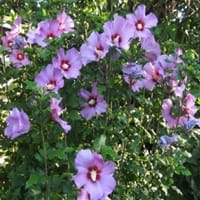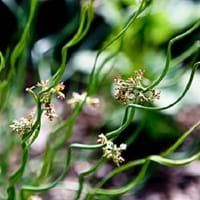Life Span
Perennial
Perennial
Origin
Australia
World/Pandemic, North America, Europe, Russia/Siberia, Africa, Asia
Types
Not available
not available
Habitat
subtropical regions, Temperate Regions, Tropical regions, Warmer regions
All sorts of environments, Banks, ditches, marshes, Shores of rivers or lakes
USDA Hardiness Zone
9-11
6-9
Sunset Zone
H1, H2, 13, 14, 15, 16, 17, 20, 21, 22, 23, 24
H1, 1a, 1b, 2a, 2b, 3a, 3b, 4, 5, 6, 7, 8, 9, 10, 11, 12, 13, 14, 15, 16, 17, 18, 19, 20, 21, 22, 23, 24
Habit
Upright/Erect
Clump-Forming
Flower Color
Blue, Purple, Blue Violet
Brown
Flower Color Modifier
Not Available
Bicolor
Fruit Color
Not Available
Non Fruiting Plant
Leaf Color in Spring
Dark Green
Green
Leaf Color in Summer
Dark Green
Green
Leaf Color in Fall
Dark Green
Green
Leaf Color in Winter
Dark Green
Green, Tan, Sandy Brown
Leaf Shape
Irregular
Long hair-like leaves
Plant Season
Spring, Summer, Fall, Winter
Spring, Summer, Fall, Winter
Sunlight
Full Sun
Full Sun, Partial Sun
Type of Soil
Clay, Loam, Sand
Clay, Loam, Sand
The pH of Soil
Acidic, Neutral, Alkaline
Acidic, Neutral
Soil Drainage
Well drained
Poorly Drained
Bloom Time
Indeterminate
Early Summer, Summer, Late Summer, Early Fall
Tolerances
Not Available
Drought
Where to Plant?
Ground, Pot
Ground, Pot
How to Plant?
Seedlings, Semi-hardwood cuttings
Divison, reseeds
Plant Maintenance
Medium
Medium
Watering Requirements
Average Water Needs, Do Not over Water, Requires regular watering
Does not require regular watering
In Summer
Lots of watering
Lots of watering
In Spring
Moderate
Moderate
In Winter
Average Water
Average Water
Soil pH
Acidic, Neutral, Alkaline
Acidic, Neutral
Soil Type
Clay, Loam, Sand
Clay, Loam, Sand
Soil Drainage Capacity
Well drained
Poorly Drained
Sun Exposure
Full Sun
Full Sun, Partial Sun
Pruning
Remove damaged leaves, Remove dead branches, Remove dead leaves
Prune to control growth, Remove damaged leaves, Remove dead branches, Remove dead leaves
Fertilizers
All-Purpose Liquid Fertilizer
All-Purpose Liquid Fertilizer
Pests and Diseases
Red blotch, Rust aphids
Free of serious pests and diseases
Plant Tolerance
Not Available
Drought
Flowers
Yes
Insignificant
Flower Petal Number
Single
Single
Foliage Texture
Medium
Fine
Foliage Sheen
Matte
Glossy
Attracts
Butterflies, Flying insects, Hummingbirds, Insects
Bumblebees, Flying insects
Allergy
Not Available
Unknown
Aesthetic Uses
Borders, Showy Purposes, small hedge
Informal Hedge, Woodland margins
Beauty Benefits
Not Available
Not Available
Environmental Uses
Air purification
Air purification
Medicinal Uses
High blood pressure, lowering blood pressure
No Medicinal Use
Part of Plant Used
Flowers, Leaves
Not Available
Other Uses
Decoration Purposes
woven into the covering of tatami mats
Used As Indoor Plant
Yes
No
Used As Outdoor Plant
Yes
Yes
Garden Design
Container, Feature Plant, Hedges, Mixed Border, Rock Garden, Wall
Bog Garden, Container, Mixed Border, Water Gardens
Botanical Name
ALYOGYNE huegelii 'Monle'
JUNCUS effusus f.Spiral
Common Name
Blue Hibiscus, Purple Delight Blue Hibiscus
Curly wurly
In Hindi
Blue Hibiscus
Corkscrew Rush
In German
Blauer Hibiskus Baum
Corkscrew Rush
In French
Bleu Hibiscus Arbre
Corkscrew Rush
In Spanish
Azul árbol del hibisco
Corkscrew Rush
In Greek
Μπλε Hibiscus Tree
Corkscrew Rush
In Portuguese
Árvore azul do hibiscus
Corkscrew Rush
In Polish
Niebieski Hibiscus Drzewo
Corkscrew Rush
In Latin
Hibiscus lignum blue
Corkscrew Rush
Phylum
Magnoliophyta
Magnoliophyta
Class
Magnoliopsida
Liliopsida
Family
Malvaceae
Juncaceae
Clade
Angiosperms, Eudicots, Rosids
Angiosperms, Commelinids, Monocots
Tribe
Hibisceae
Not Available
Subfamily
Malvoideae
Not Available
Number of Species
Not Available
Not Available
Season and Care of Blue Hibiscus and Corkscrew Rush
Season and care of Blue Hibiscus and Corkscrew Rush is important to know. While considering everything about Blue Hibiscus and Corkscrew Rush Care, growing season is an essential factor. Blue Hibiscus season is Spring, Summer, Fall and Winter and Corkscrew Rush season is Spring, Summer, Fall and Winter. The type of soil for Blue Hibiscus is Clay, Loam, Sand and for Corkscrew Rush is Clay, Loam, Sand while the PH of soil for Blue Hibiscus is Acidic, Neutral, Alkaline and for Corkscrew Rush is Acidic, Neutral.
Blue Hibiscus and Corkscrew Rush Physical Information
Blue Hibiscus and Corkscrew Rush physical information is very important for comparison. Blue Hibiscus height is 120.00 cm and width 120.00 cm whereas Corkscrew Rush height is 45.70 cm and width 61.00 cm. The color specification of Blue Hibiscus and Corkscrew Rush are as follows:
Blue Hibiscus flower color: Blue, Purple and Blue Violet
Blue Hibiscus leaf color: Dark Green
Corkscrew Rush flower color: Brown
- Corkscrew Rush leaf color: Green
Care of Blue Hibiscus and Corkscrew Rush
Care of Blue Hibiscus and Corkscrew Rush include pruning, fertilizers, watering etc. Blue Hibiscus pruning is done Remove damaged leaves, Remove dead branches and Remove dead leaves and Corkscrew Rush pruning is done Prune to control growth, Remove damaged leaves, Remove dead branches and Remove dead leaves. In summer Blue Hibiscus needs Lots of watering and in winter, it needs Average Water. Whereas, in summer Corkscrew Rush needs Lots of watering and in winter, it needs Average Water.





